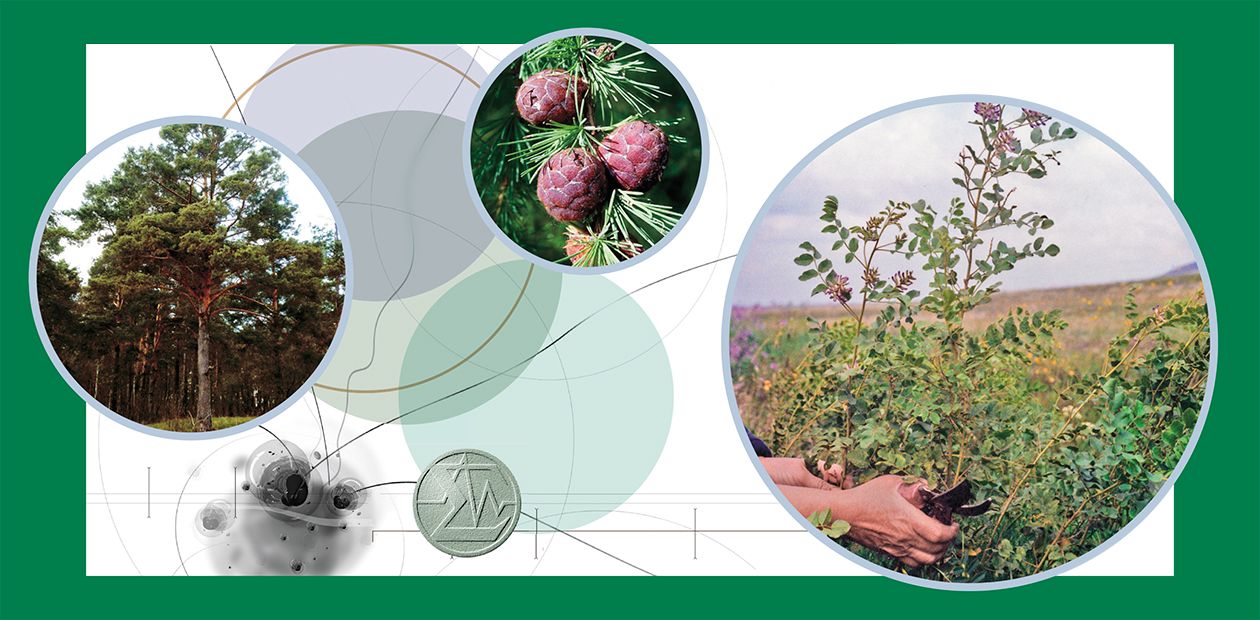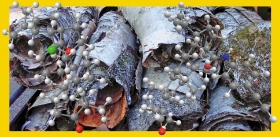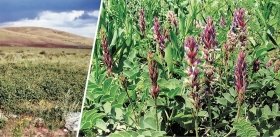Siberian Flora – for Russian Pharmaceutics
The Novosibirsk-based Vorozhtsov Institute of Organic Chemistry of the Siberian Branch of the Russian Academy of Sciences (SB RAS), in collaboration with other institutes of the SB RAS and of the Siberian Branch of the Russian Academy of Medical Sciences, has performed a series of unconventional studies in the area of fine organic synthesis and, using advanced production technologies, obtained from Siberian plants an extensive group of substances with valuable pharmacological properties
The Department of Chemistry of Natural and Biologically Active Compounds of the Novosibirsk Institute of Organic Chemistry is a RAS leading venue for the research and development of medicinal products derived from individual substances (plant metabolites) extracted from Siberian woody and supreme terrestrial plants.
Siberian flora has proved to be a true depository of biologically active substances. For instance, birch rind contains betulin at concentrations as high as 25—30%. The amides of betulonic acid derived from betulin were used to synthesize the pioneering correctors of toxic effects in cytostatic chemotherapy of tumors and a candidate anti-HIV drug, Betulavir.
Cedar needles and turpentine are source materials for making lambertianic acid serving as a base of new-generation potent analgesic, nootropic, thrombolytic and antileukemic drugs. Derivatives of alantolactone, an elecampane root metabolite, are promising anti-ulcer agents.
Glycyrrhiza glabra has long been used in traditional medicine of many countries. Its metabolite, glycyrrhezinic acid, was used to design Glycidipine, a drug for treating hypertension and cardiac arrhythmia, and Simvaglizine, a cholesterol-lowering drug.
Underlying the development of both products is the concept of clathration – formation of complexes between a drug and special agents. In these products, plant metabolites (specifically glycyrrhezinic acid derived from elecampane root and larch arabinogalactan) can serve as special agents. Clathration makes it possible to reduce the drug dose to from 20 % to 1 %, to alleviate side effects and to uncover new therapeutic properties.
An extensive cycle of studies on the chemistry and pharmacology of hundreds of novel substances has allowed the laboratory to collect a comprehensive library of agents worth further investigation, to design promising candidate-drugs that have passed the full cycle of preclinical tests and are now pending clinical approval. Finally, there are developments of the high degree of completeness, including post approval drugs.
The presented results provide vivid illustration of how the resources of Siberia and its scientific and technological base can serve the production of efficacious medicinal products. Siberian flora can and should become a foundation for future development of national pharmaceutical industry.
References
Tolstikova T. G., Tolstikov A. G, Tolstikov. G. A. On the way to Low-Dose Drugs // RAS Bulletin. 2007. No. 77(10). P. 867—874.
Tolstikova T. G., Tolstikov A. G. Sweet Scythian Root // SCIENCE First Hand. 2008.No.2(20). P. 68—77 (in Engl.).










